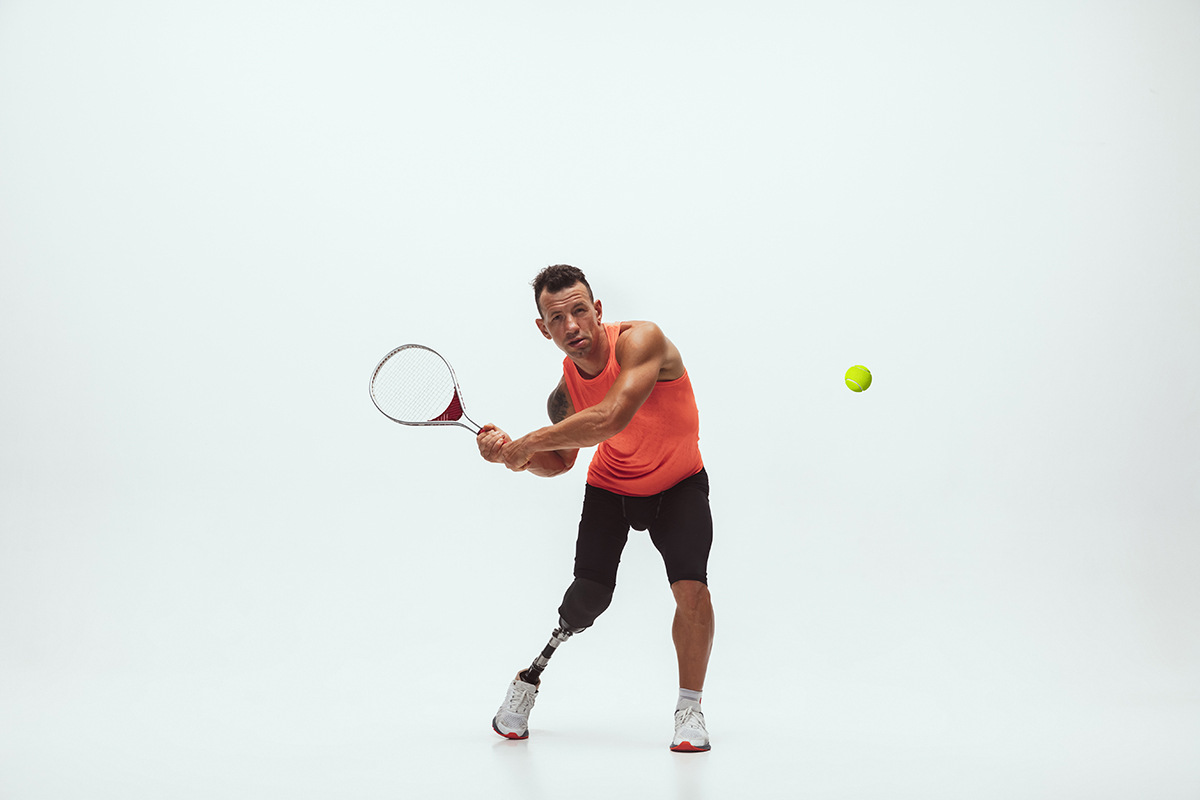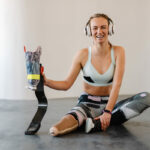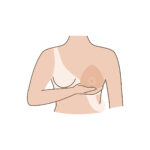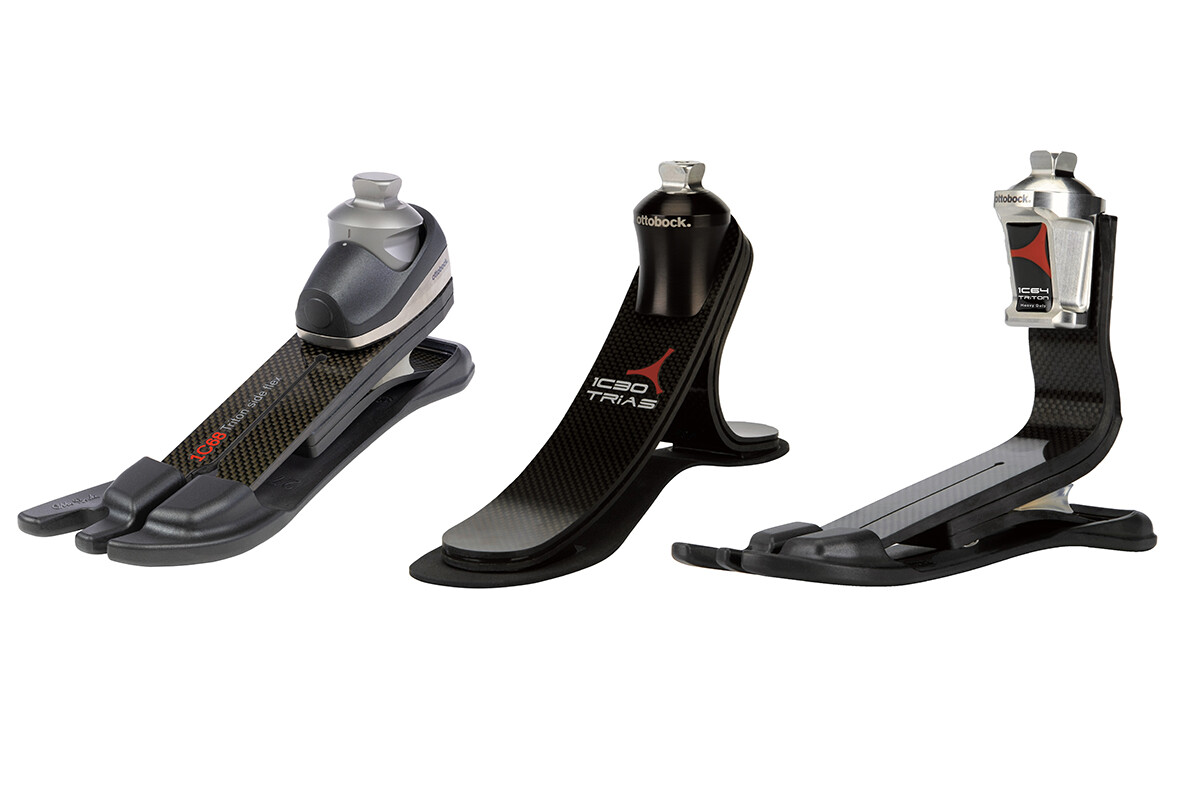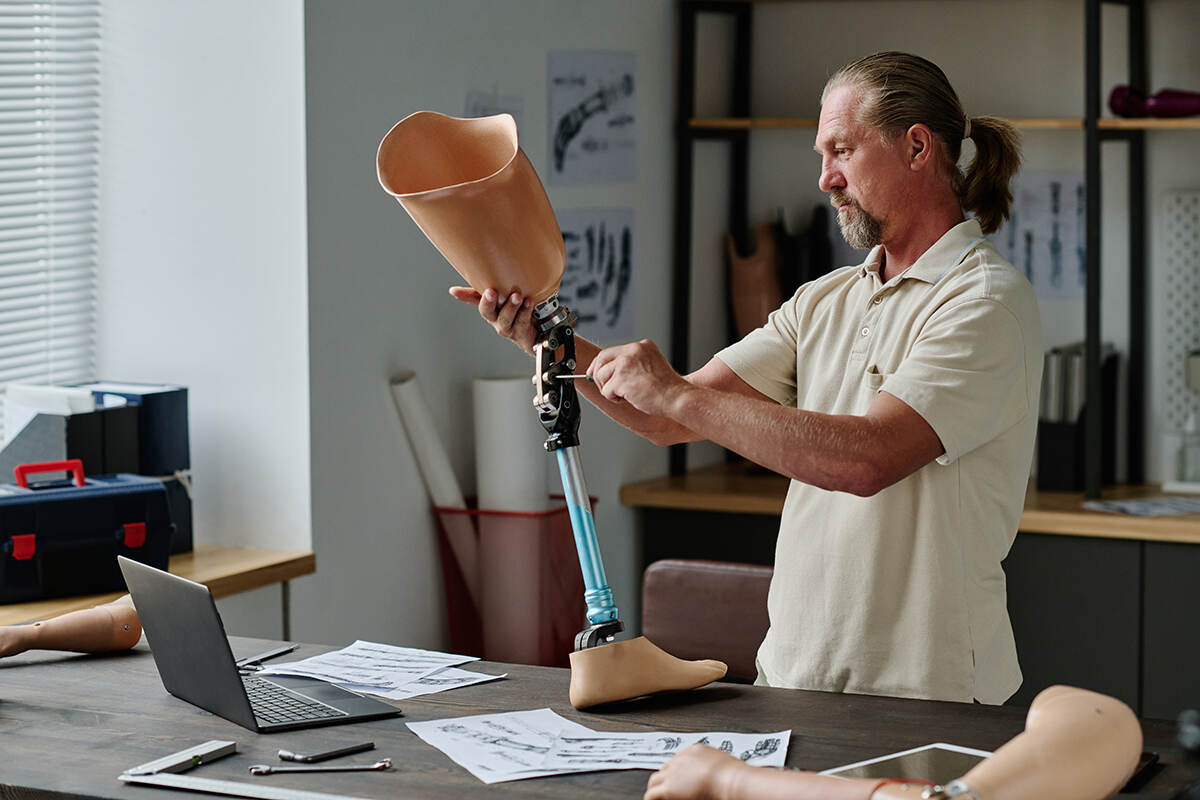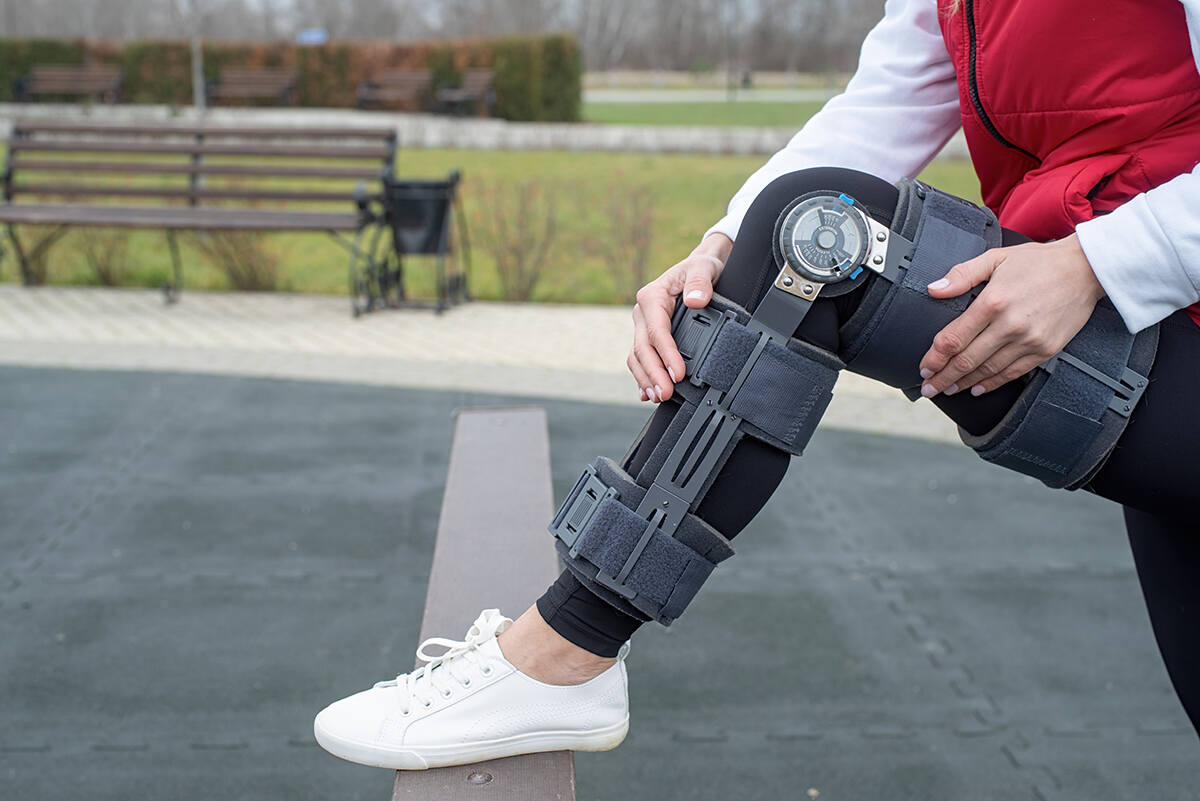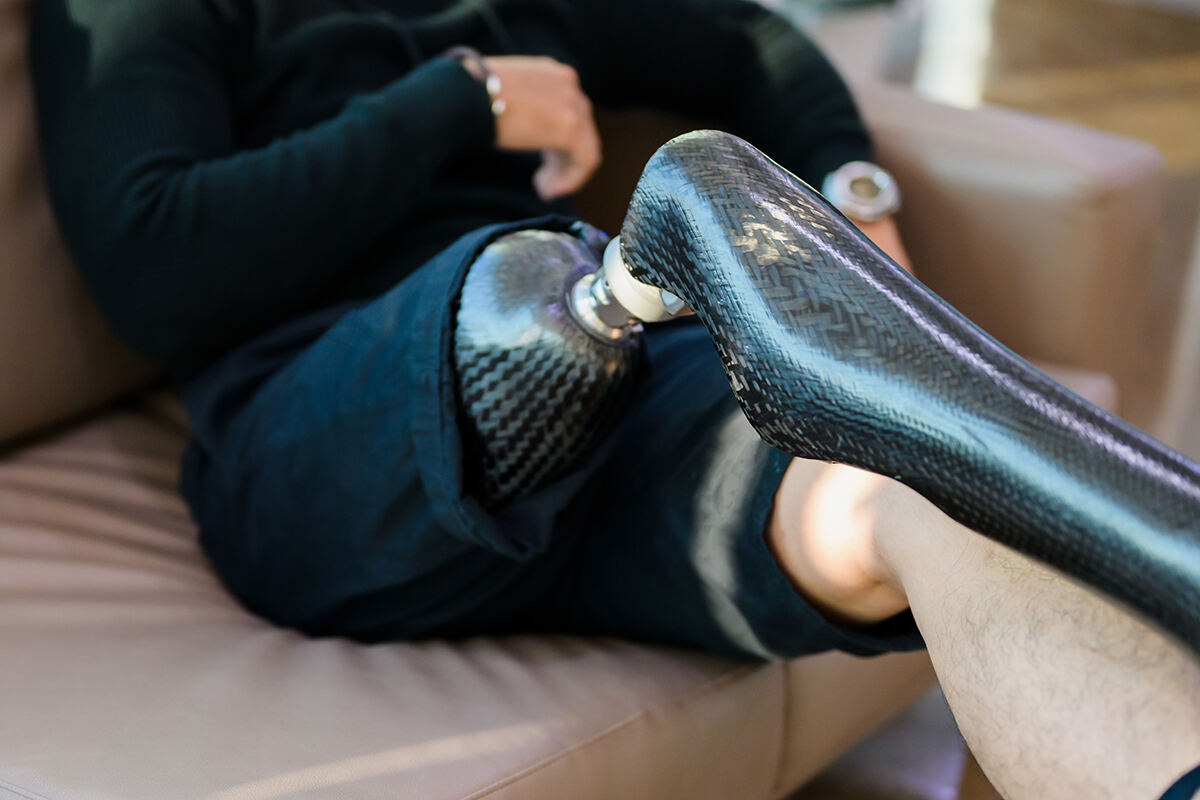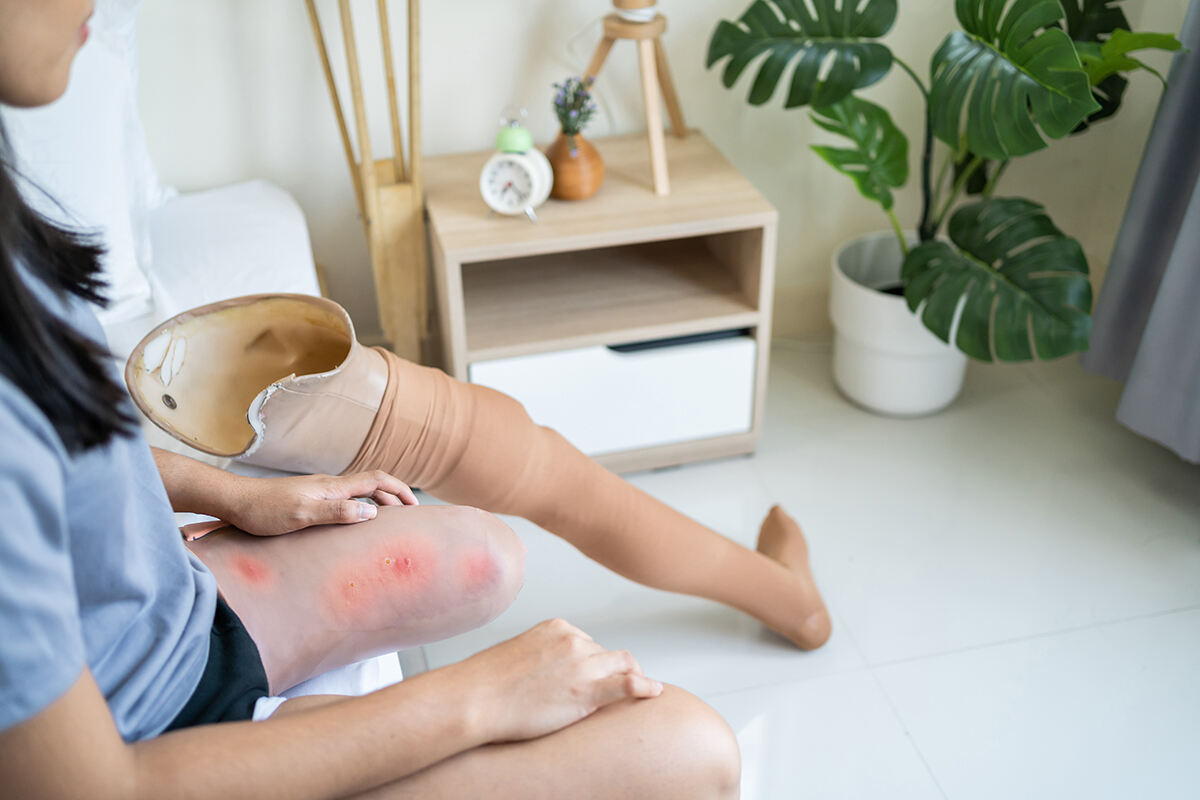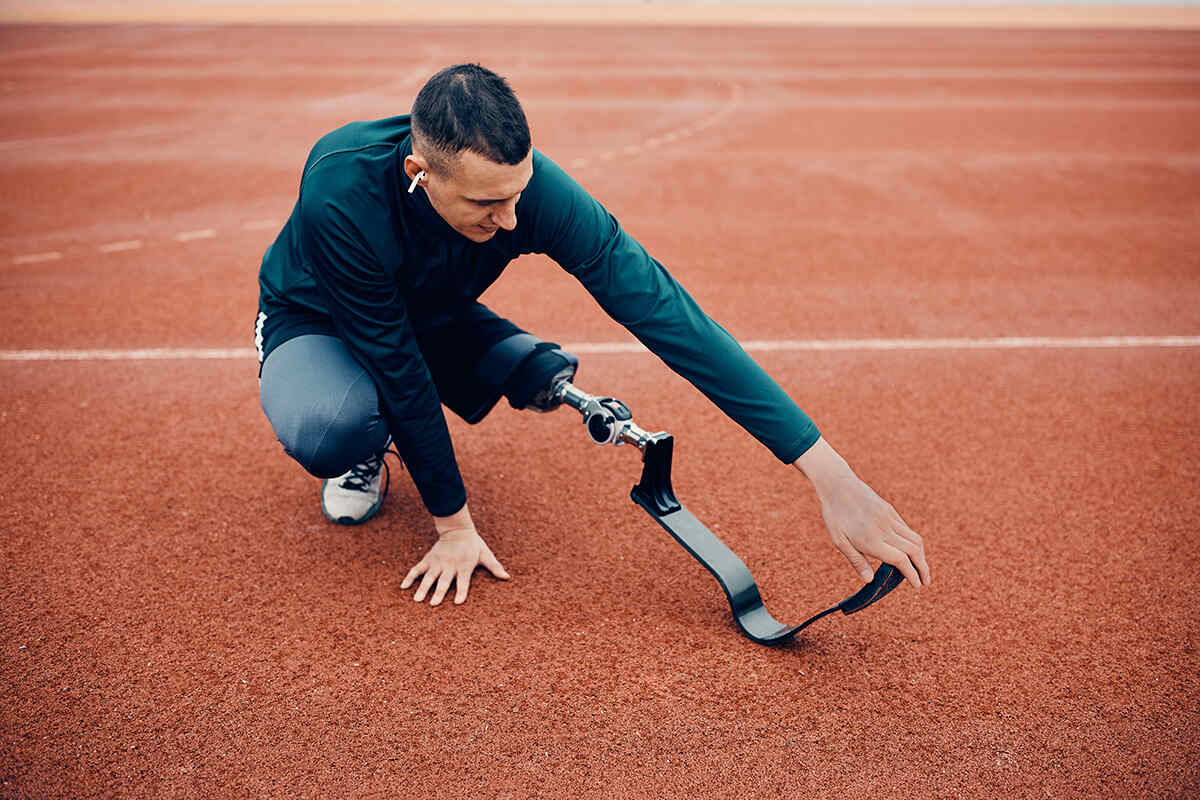This article sheds light on the fundamentals of below-knee prosthetics, from selecting a suitable model to mastering its use. Explore the necessary steps for a comfortable fit, the physical components involved, and the rehabilitation process to enhance mobility, without unnecessary jargon or complexity.
Key Takeaways
- A thorough fitting process including initial assessments, fittings of diagnostic sockets, and eventual customization of the permanent prosthesis is crucial for below-knee amputees to achieve comfort and mobility.
- A below-knee prosthetic leg is comprised of pivotal components such as the socket, pylon, foot, and suspension system, all of which must work in unison to effectively replicate the function of a natural leg.
- Rehabilitation, addressing physical challenges like pain management and skin irritation, along with psychological support, is essential for adapting to a below-knee prosthetic leg and maintaining its long-term functionality.
Understanding Below Knee Amputation and Prosthetics

A below-knee amputation, also known as a transtibial amputation, is often necessitated due to trauma, infection, or vascular conditions associated with diabetes. The process of receiving a below-knee prosthesis begins with a thorough assessment of the amputee’s requirements, followed by accurate measurement of the residual limb, ensuring a comfortable fit for the amputated leg.
A prosthetist then creates a personalized definitive prosthesis, which is adjusted to ensure comfort and effectiveness.
The Journey from Amputation to Prosthesis
Transitioning from amputation to prosthesis involves a joint effort from the patient, the prosthetist, and the rehabilitation team. It begins with the initial fitting of a diagnostic socket, which accommodates changes in the shape and size of the residual limb.
Next comes the shift from the temporary prosthesis to the permanent one, which provides more stability.
Types of Below Knee Prostheses

There are various types of below-knee prostheses available, each designed to cater to individual needs and lifestyles. Models with an active vacuum system and those with a silicone liner pin system are the most widely preferred designs. They are known for their popularity in the market. These prostheses include a personalized socket that is shaped to fit the patient’s limb perfectly.
Importance of a Proper Fit
The fit of a prosthetic leg plays a fundamental role in its usefulness. It directly impacts comfort, mobility, and the overall success of the user. The diagnostic socket serves as a transparent, plastic socket utilized to assess the proper fit of the prosthetic socket and pinpoint any areas requiring modification. The prosthetist can be forced to create multiple diagnostic sockets before finding the one that fits perfectly on the patients leg. In the immediate time after amputation, the patients leg changes shape and form several times so changing sockets mulptile times over the first 1-2 years is very common.
Essential Components of a Below Knee Prosthetic Leg
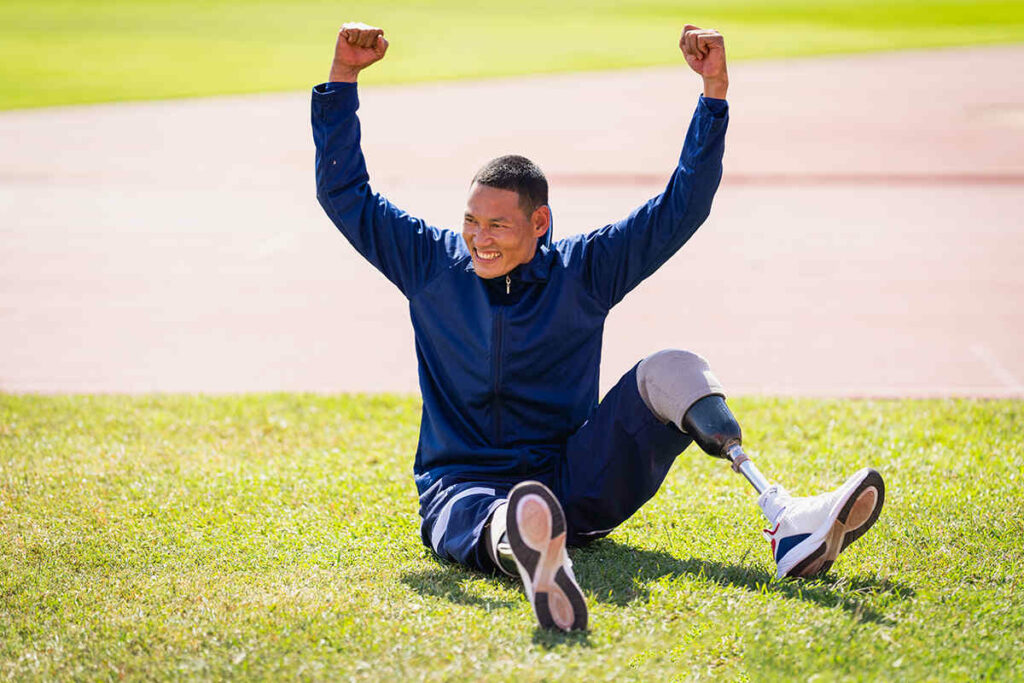
A below-knee prosthetic leg consists of four key components – the socket, the pylon, the foot, and the suspension system, all working together to mimic the function of a natural knee joint.
The Socket: Your Connection to Comfort
The socket connects the residual limb to the prosthetic leg, providing a vital base for the user’s comfort and stability. It is typically constructed using carbon with a flexible brim, ensuring a perfect fit.
Pylon and Foot: Supporting Your Steps
The pylon, often made of aluminum, stainless steel, or titanium, provides structural support for the leg.
The foot, on the other hand, offers a base and mimics the function of a natural foot, supporting various activities, including walking and running.
Suspension Systems: Keeping Your Prosthesis Secure
The suspension system secures the prosthesis to the residual limb, providing stability and preventing excessive movement. This system ensures that the prosthesis remains securely attached, even during vigorous activities.
Rehabilitation with a Below Knee Prosthetic Leg
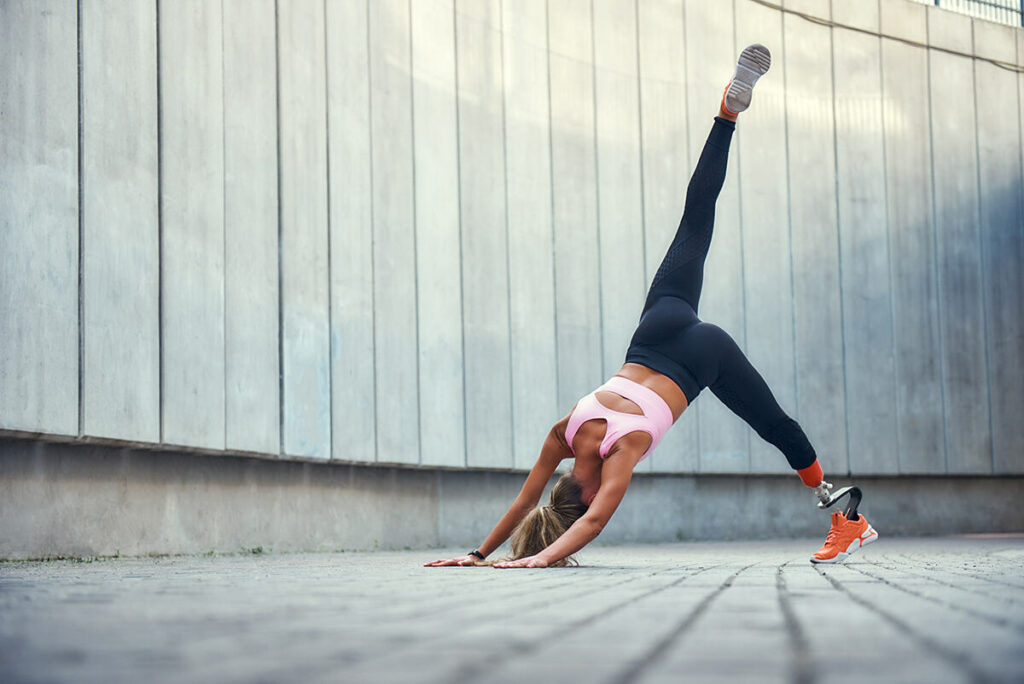
Rehabilitation is a significant stage in the journey towards adapting to a below-knee prosthetic leg. It involves physical therapy, gait training, and overcoming challenges such as pain management and skin irritation.
Gait Training: Learning to Walk Again
Gait training helps you relearn walking with your new prosthetic leg. It instructs the individual on the correct way to walk, ensuring correct heel strikes of the non-prosthetic limb, and providing verbal and tactile cues to improve prosthetic limb training. Training is even more important for bilateral amputees where one would have no human leg/foot.
Overcoming Challenges: Pain Management and Skin Irritation
Pain and skin irritation are common challenges faced during the rehabilitation of a prosthetic leg. Pain management techniques include:
- Epidural analgesia for postoperative pain relief
- Wearing an elastic stump sock
- Stump massage
- Use of cold packs
For skin irritation, maintaining good stump hygiene, wearing loose clothing, and using moisture-wicking fabrics can be beneficial.
Long-term Care and Adjustments
As the residual limb evolves over time, long-term care and modifications become indispensable. Regular check-ups and adjustments are vital for ensuring the appropriate fit and comfort of the prosthesis.
Adapting to Life with a Below Knee Prosthesis
Adapting to life with a below-knee prosthesis involves mastering everyday activities, participating in sports, and coping with the psychological aspects of limb loss, all while learning to navigate daily life without the use of a real leg.
Everyday Activities: Home, Work, and Beyond
Adapting to everyday activities with a prosthetic leg may require adjustments at home and work. This could include repurposing household items or making modifications to the home environment to enhance mobility and accessibility.
Engaging in Sports and Recreational Activities
With a below-knee prosthesis, you can engage in various sports and recreational activities such as cycling, wakeboarding, and horseback riding. The use of a prosthesis can be adapted to suit these activities, and the choice of prosthetic components may require customization for activities involving water.
Psychological Aspects: Coping with Limb Loss
Coping with the psychological aspects of limb loss is an integral part of the overall adaptation process. Counseling can aid in coping with a below-knee amputation by facilitating acceptance of body image, alleviating distress, and averting psychological abnormalities.
Personalizing Your Prosthetic Experience
Tailoring your prosthetic experience can enhance the comfort and satisfaction during the adaptation process. This can be achieved through cosmetic coverings, technological innovations, and working closely with your prosthetist.
Cosmetic Coverings: Matching Your Style
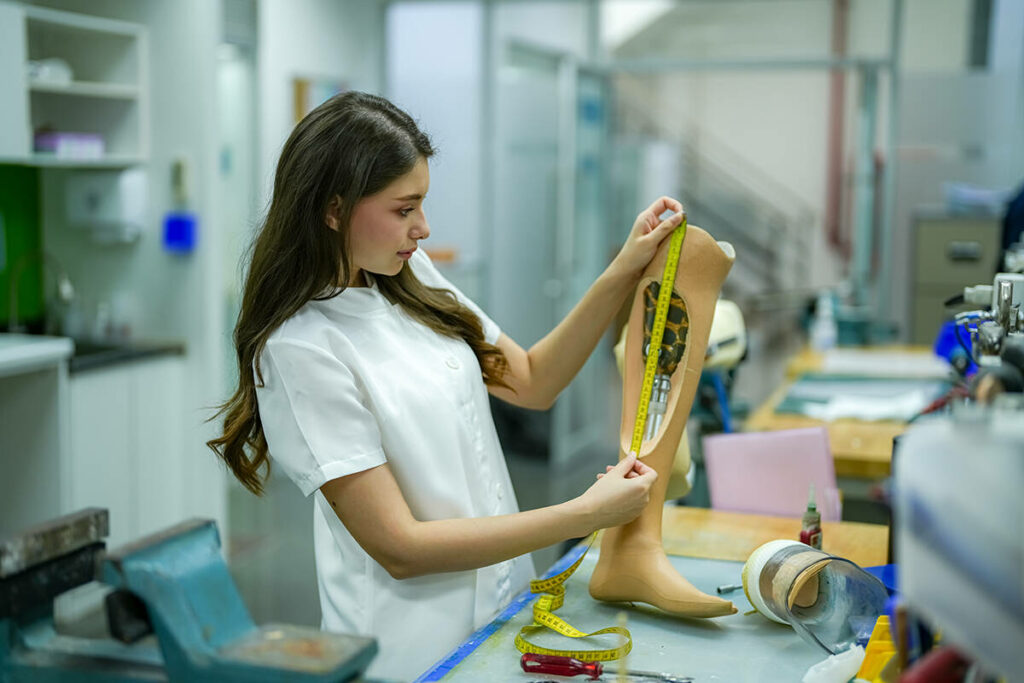
Cosmetic cover for your prosthetic leg can be tailored to match your personal style. These coverings are colored to match the patient’s skin, often utilizing spectrophotometric technology for a realistic outcome.
Technological Innovations: Enhancing Functionality
Technological innovations are drastically enhancing the functionality and comfort of prosthetic legs. Microprocessor-controlled knees and mind-machine interfaces are some of the advancements that are improving the user experience and functionality of prosthetic legs.
Working Closely with Your Prosthetist
Working closely with your prosthetist ensures that you receive personalized guidance to meet your unique needs and achieve a well-fitting prosthetic leg, or leg prosthesis, that reflects your personal style. Regular checkups are recommended with your prosthetist.
Maintenance and Troubleshooting
Maintaining and troubleshooting your prosthetic leg is an essential part of your daily life with it. Routine care and identifying common issues can prevent discomfort and potential complications.
Routine Care for Your Prosthetic Leg
Regular care for your prosthetic leg includes:
- Checking the residual limb for irritation or skin problems
- Performing suggested stretching exercises
- Keeping the residual limb clean with mild soap and water.
Identifying and Solving Common Issues
Identifying and solving common issues with your prosthesis can prevent discomfort and potential complications. This involves refining the socket fit through various stages, including:
- Positioning the stump correctly
- Bench alignment
- Static alignment
- Dynamic alignment
Some even keep a spare wrench key with them at all times, if for say a screw would come loose.
When to Contact Your Prosthetist
Reaching out to your prosthetist when problems occur is vital to sustain the optimal fit and functionality of your prosthetic leg. Regular check-ups and modifications are necessary due to changes in the limb over time.
Summary
Navigating life with a below-knee prosthetic leg involves understanding the amputation process, essential components of a prosthetic leg, rehabilitation, and adapting to everyday life. Personalizing your prosthetic experience and maintaining your prosthetic leg are also crucial aspects. Remember to remain patient with yourself throughout this journey and work closely with your healthcare team to achieve the best possible results.
Frequently Asked Questions
How much is a prosthetic leg below knee?
The cost of a prosthetic leg below the knee varies based on factors such as materials and design. It’s essential to consult with a prosthetist for an accurate estimate.
How hard is it to walk with a below knee prosthetic?
Walking with a below-the-knee prosthetic is generally easier than with an above-the-knee prosthesis, especially if the knee joint is intact, allowing for more mobility. The reason for amputation and the health of the residual limb can also affect the ease of walking.
What is the best prosthesis for below the knee?
The best prosthesis is the one that works for the patient. For below the knee is Active Vacuum and Silicone Liner Pin Systems which are frequently preferred for below knee amputation due to their effective design and lock system.
How long does a below knee prosthesis last?
A below knee prosthesis can typically last between three to five years, but the duration can vary based on changes in your residual limb.
What is the process of fitting a below-knee prosthetic for an amputated leg?
The process of fitting a below-knee prosthetic involves assessing the individual’s needs, measuring the remaining limb, customizing the prosthesis, and ensuring comfort and functionality through adjustments. This comprehensive approach ensures a tailored and effective fit for the amputee.


